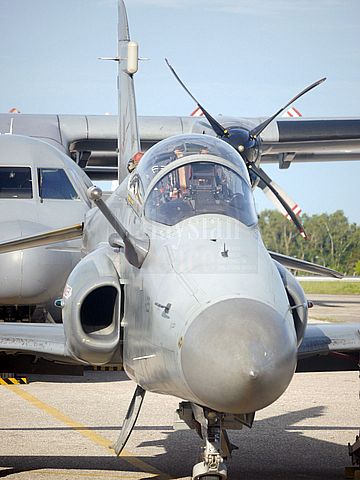
SHAH ALAM: At the recent Singapore Airshow 2016, Finmeccanica announced that it had secured a contract to provide radar warning receiver (RWR) to the Indonesian Air Force. The contract requires the company to install the SEER RWR on the BAE Systems Mk 209 Hawk of the Indonesian Air Force. It also includes an option to supply additional systems in the future.
Back in 2010, it was widely reported that Finmeccanica (then known as Selex Galileo) had expected to receive a contract to equip RMAF Hawks, both the 108s and 208s, with a new radar warning receiver (RWR) system, the SEER.
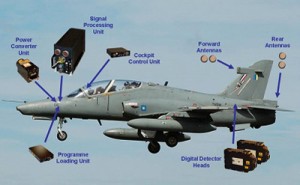
It was the same RWR as the Indonesian AF contract, which Finmeccanica described as the self-protection equipment that had been designed as a drop-in replacement for BAE’s Sky Guardian 200 RWR system, previously installed on platforms including the Hawk.
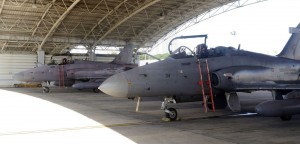
According to the release, the company was confident as getting the contract as it had supported flight trials of the new equipment (in 2010) with a Malaysian Hawk. “The RWR met all of the jointly agreed objectives, with Seer being able to detect radars at ranges that were an order of magnitude greater than those achieved by older-generation systems,” the company said at the time.
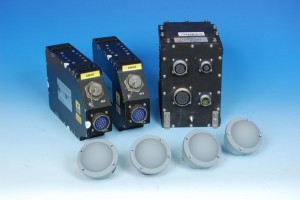
Comprising four wide band spiral antennas, two digital detectors, a signal processor and a cockpit display, Seer is “capable of identifying and prioritising complex RF signals in a hostile threat environment”, it added.
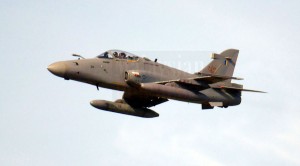
Fast forward to 2016, we know that the Hawk upgrade was not funded in RMK10 and even in RMK11, funding for the programme remained uncertain. By coincidence (ahead of the Finmeccanica announcement of the Indonesian AF contract) at the Singapore Airshow , I spent part of the day talking with industry sources on the Hawk upgrades. Once the announcement was made I knew I had my story already.
Those I spoke to at the airshow were optimistic that the RMAF own Hawk upgrades will be signed at DSA 2016 in April but cautioned the recent economic headwinds may well scuttled the deal – yet again. By all accounts the upgrades planned are limited mostly involving the cockpit displays, HUDs (of course the mission computers will be changed as part of the upgrades) and the RWR.
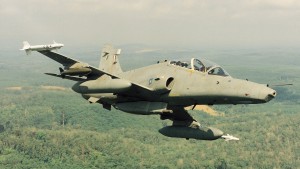
It was the same solution that went unfunded in RMK10 so in the current fiscally challenging situation the same thing could repeated. However as the Hawks especially the 208s are currently heavily involved in the operations to ensure the security of Sabah, the bean counters may well be persuaded to release the funds needed for the upgrade programme. Unfortunately, it may well be limited to the 208s only and not across the whole fleet as planned originally.
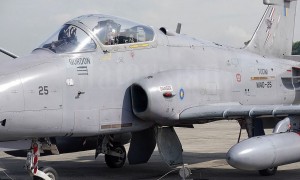
As had been reported before, RMAF is planning to base a Hawk squadron in Sabah as part of the plan to boost the security of Sabah following the Lahad Datu incursion. At least six Hawks are now based at Labuan airbase together with the occasional rotation of Hornets and Sukhoi squadrons.
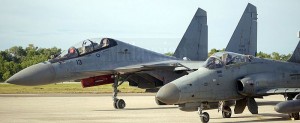
Anyhow even with the limited upgrades, the 208s according to industry sources will get a much needed boost in capability similar to the latest generation Hawks. The upgrades will allow the 208s to carry and fire the new Aim-9X Sidewinders (ordered already) or ASRAAM (not ordered).

Apart from air-to-air weapons, the upgraded 208s will also be cleared to carry targeting pods to guide bombs, rockets and missiles like the Brimstone. Of course the guided ordnance could also be “buddy lased” by soldiers on the ground or another aircraft equipped with a targeting pod.
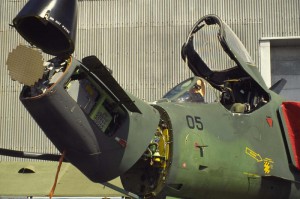
Unfortunately, unlike the cockpit and RWR upgrades – which had been done by others – replacing the APG-66H radar on 208s will be more problematic. This according to an industry source was due the small nose of the Hawk which will need a specialised solution for an upgrade and could incur higher costs.
The H version has a smaller antenna compared to the radar which was the standard on the F-16A.
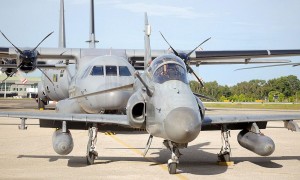
Anyhow there is no need to fund the upgrades for the Hawks if we were to buy the Typhoon as I had posted recently. It will be done FOC.
— Malaysian Defence
If you like this post, buy me an espresso. Paypal Payment


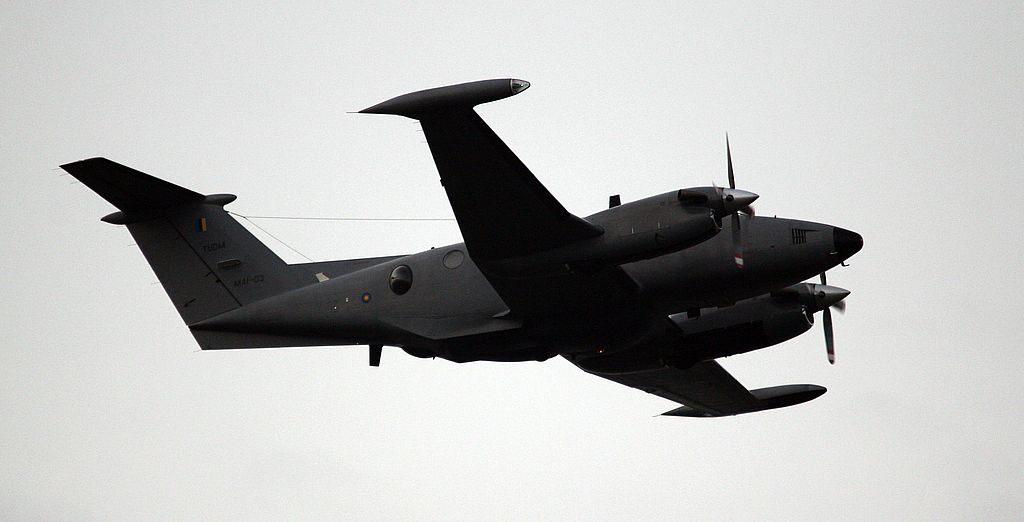
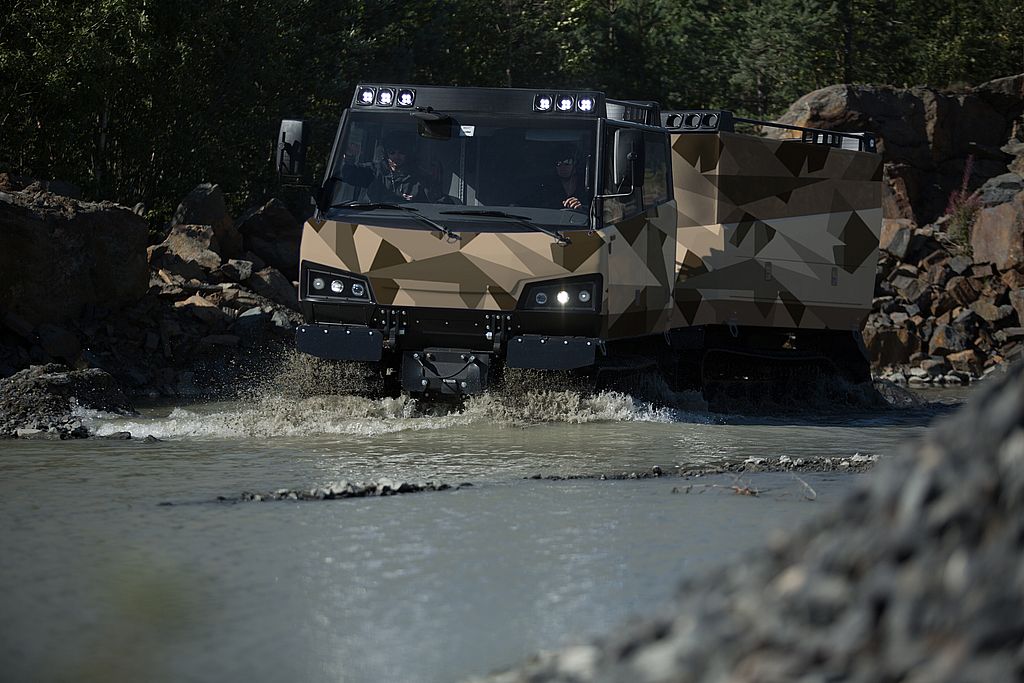
For Rmk11 we still have no clue of how much budget there is for tudm capex
Some of the things that is chasing for tudm fund in Rmk11
1) hercules upgrades
2) nuri upgrades
3) hawk upgrades
4) mrca
5) ground radar upgrades
6) SAR/maritime patrol capability
The biggest question if we were to buy the typhoon is… How much would it cost? Oman bought 12 typhoons plus 8 hawks for usd 4 billion. In a few days we would know Kuwait’s contract for new typhoons. Dassault is asking india usd 13 billion for 36 fly away rafales. To compare, we got our 18 su-30mkm for only usd 900 million.
If say tudm do have a usd 4 billion allocation for Rmk11
1) nuri upgrades (3×16) usd 48 million
2) hercules upgrades. Sell off 3 old long fuselage hercules for usd 120 million. Use the money for hercules upgrades, plus buy the 1 short fuselage hercules at airod. That plus another tudm short fuselage hercules to be equipped for SAR/CSAR capability, with FLIR, air refuelling probe, satcom etc etc. So tudm hercules fleet would consist of 2x sar/csar capable hercules, 4x kc-130 tankers and 6x c-130h-30 long fuselage hercules.
3) AEW&C and maritime patrol capability. Buy saab bombardier global 6000 based platforms. We already have 1 VIP bombardier so we have the experience of flying that platform. 2x saab erieye-ng AEW&C (without the complicated globaleye system) plus 6x saab swordfish mpa. (350×2 + 100×6) usd 1.3 billion. Having AEW&C and mpa systems would greatly enhance tudm current fighters capability and also tldm future gowind fleet.
4) mrca. Lower the expectation and get a light fighter for now. Medium mrca could be deferred to rmk12 (2020-2025). 24 fa-50 plus 16 ta-50 could be had for usd 1.3 billion to equip 3 squadrons. Use the hawks as is (concentrate all in 1 sqn) and replace with medium MRCA in rmk12
5) hornets. Ask Australia for 4 f/a-18b (out of 16 remaining) two seaters. Now they are preparing to retire the hornets their new pilot training would not be as busy as previous. This would enable tudm hornet fleet to increase to 12. Further additional hornets could be done in rmk12.
6) ground based radars. Allocate usd 600 million to upgrade/get new radars.
7) su-30mkm minor upgrades. Software upgrades to the damocles pod, bars radar, sap-518 pod. New HMS (I like the scorpion hmd), satcom capability (for data/communication during long range strike/patrol). 1 or 2 recce pod (thales?) to replace rf-5e capability. 4-6 additional used MKI converted to MKM to enable airframes to rotate for maintenance. Used buy to circumvent the current sensitivity with Russia. India can replace those sold with new build mki (add to proposed additional 40 mki buy). Budget usd 450 million for the flanker exercise.
Total spend around usd 3.7 billion. More capability to defend malaysian sovereignty for less than a proposed typhoon/rafale buy.
I have sense that we might get 2nd hand tyhoon T2…
Typhoon…its just not possible. No dinero.
Hornets that would be my choice.
Its not easy to get second hand typhoons. This is because the brits are planning to use the tranche 1 planes for their air defence requirements n others are not selling now
Germany, Italy and Spain all has offered to offload their tranche 1 typhooms to various countries. It was offered for around usd 35 million each.
The problem is, it is a very difficult aircraft to further upgrade (unless eurofighter is bluffing, wanting customers to buy tranche 3 typhoons instead of upgrading their tranche 1. All those issues having to extensively modify the airframe to accommodate aesa radar is just not there on other aircraft like the f-16 and f/a-18.)
If you are content with the tranche 1 specs till the end of its useful lives, then fine. But in a few years time upgraded f-16 (f-16v), f/a-18 would have aesa, upgraded cockpits, etc etc, then would you be comfortable flying in the tranche 1 typhoons?
At this juncture, IMHO what ever air combat assets we have would be sufficient for patrolling and deterrent purposes though not adequate if there is a high intensity conflict should occur.
I mean the SU30 annd Hornet D (26 in numbers) would be sufficient as deterrent purposes. The MIG 29 (status unclear, 10 in numbers) and the 13 Hawk 200 could still be used for low intensity operations. If ever high intensity conflict occurs, we cab be rest assured (for nowla) Uncle SAM and the Royal Navy will get involve.
I think for air assets the focus should be for more ISR platforms that we are severely lacking such as MPA, ASW Heli,long range drones and to a lesser extent AEWACS.
For long range drones, something like the sagem patroller would be something tudm could afford.
A system consisting of 3 uavs and 1 ground station would cost around usd 35million. A squadron of 4 systems would cost about usd 140 million.
Each system would enable 1 continuous 24h orbit (that means 1 uav to always be on the air) to be set up. Each patroller uav has an endurance of 30h. So a squadron could fly 4 ISR orbits continuously (1 in esscom, 2 in spratlys/sarawak shoals, 1 supporting other missions). The patroller uav, along with other assets such as the smaller scaneagle uav, swordfish mpa, AEW&C, police beechcraft ISR and others to create a credible ISR capability for malaysia.
Reply
The figure you quoted US$140 million will be correct only if we buy direct not through a local agent which is almost certainly the way its going to be.
……. – ”su-30mkm minor upgrades”
Not upgrades to Damocles but a replacement. In view of it’s limitations as a pod, work on a replacement for Damocles started a few years ago to meet a French air force requirement. From what I’ve heard; our MKMs lack a Health Monitoring System and according to another source, there were plans for a towed decoy. Off course the biggest upgrade we can do – apart from replacing Bars with an AESA – is to fit both the MKMs and Hornets with a common data link.
Kamal – ”I mean the SU30 annd Hornet D (26 in numbers) would be sufficient as deterrent purposes.”
The RMAF has to ensure that it has aircraft to maintain a permanent 24 hour QRA, have others available for training and others available for unexpected contingencies – very tough given the numbers we have and taking into account that at any one time ‘X’ number of Hornets and MKMs will be undergoing squadron or depot level maintenance.
Marhalim,
Given that the Hawks have enough air frame life for at least 7-8 years of service and that BAE Systems will continue support the Hawk 100/200 series for the foreseeable future; the obvious question is for how long more will Northrop Grumman continue to support the APG-66H?
Reply
I believe NG has stopped supporting the APG-66/68 series for sometime now. The support is coming from several companies from the US. That is the reason I brought up the cost of getting a new radar for the Hawks.
the best solution is of course the replacement of the Damocles pod with something newer, like the thales TALIOS pod for example. But a total replacement won’t be a minor upgrade, and would cost more.
It is said that the upgraded Bars R radar of the SM is mostly just software upgrades. So it is possible if the current Bars radar in th MKM to be upgraded to as near as the Bars R standard.
For HUMS, india is looking to integrate a south african HUMS to the MKI. Maybe we can install this too?
http://2.bp.blogspot.com/_44d3OT-xI3U/SfyH8FbL05I/AAAAAAAAAsc/4Bfxtn9MDFk/s1600-h/Slide3.JPG
For the hawks, i would prefer if money for the planned hawk upgades to be spend on the hornets, the AESA radar similar to the super hornet maybe?
Regarding the picture of the RNZAF apg-66 equipped Skyhawks.
Currently all of them (along with RNZAF’s Aermacchi MB-339CB) was sold to a private american company, Draken International for adversary contracts with USAF and others.
http://alert5.com/wp-content/uploads/2015/08/150827-F-ZZ999-0011.jpg
We could do the same, selling off the Hawks before it becomes obsolete. The money could then be used t fund upgrades or new stuffs. South Korea also sold off their hawks to a private american company, Air USA for similar purposes
http://www.blogcdn.com/slideshows/images/slides/367/961/3/S3679613/slug/l/hawk-8-close-bright-1.jpg
Look at the USA registration beneath the ROKAF serials on the fin
……,
We’ve already spend quite a lot on upgrades for the Hornets. All that remains is for the 8 to receive an AESA. A replacement for Damocles would cost more but then we would be getting a pod with much superior capabilities than Damocles. The IAF’s “Super MKI” upgrade includes structural modifications to accommodate Brahmos and some changes to the fuselage to reduce RCS.
It makes sense to upgrade the Hawks; especially given there will be instances where it would be more practical to use a Hawk; rather than a Hornet or a MKM. In 2007 we signed a deal to overhaul the Adours; wonder how many hours they have left before needing another overhaul. Same with the spares; we signed for a spare package but that was in 2007.
I believe the Hawks can still be maintained n upgraded. Its the cheapest solution thus far. If can arm them with a targetting pod this would makw it even more lethal. We need to conserve the life of our Su n F18. So make more use of the Hawks. We can even use the Hawk for QRA. our normal QRA is for soviet overflights. They normally crosses malaysia nearby tge Thaima border. The Hawks being stationed in Butterworth n Kuantan can handle them
Is our hornet’s hav low flight hours?
And is there any low flight hours legacy hornet’s out there?
Reply
The most likely low houred legacy Hornets are those with the Kuwaiti AF, though they may have used much of the hours flying in Yemen now.
QRA with subsonic hawks? The Q in QRA stands for quick, and there is nothing quick with.subsonic hawks. We are better off overhauling the f-5e for QRA duties rather than using hawks for that.
I admit the hawks are perfectly fine for ground attack and point defence tasks. FYI there is a big difference between flying point defence tasks and doing QRA duties. Point defence is trying to intercept aircraft from arriving at your designated defence area, and that involves mostly the hostile aircraft flying towards you. In QRA, the hostile aircraft could be flying away from you, and how do you chase it if you have the same speed or slower than it?
For example, as lee yoke meng suggests. Say a subsonic Boeing 777 is detected 150km from kota baharu flying towards the town heading east to say krabi. By the time a hawk is launched either from kuantan or butterworth (kota baharu is about 30min at max subsonic speed from kuantan or butterworth), the 777 would already flown over kota baharu and be somewhere near krabi.
That is why you need supersonic dash speed for QRA. And for me, that is something like the fa-50 could perform (instead of depending solely on su-30mkm or hornets when the migs are retired), low cost but with supersonic dash capability.
Lee – ”I believe the Hawks can still be maintained n upgraded.”
As indicated before; our 100/200s still have lots of life on their air frames.
Lee – ”our normal QRA is for soviet overflights. They normally crosses malaysia nearby tge Thaima border.”
Even after 11 and 12 Squadrons were operational; QRA for a period was the responsibility of RAAF Mirage 111s. Yes, quite a few Badgers and Antonovs were intercepted but usually in international airspace. The Badgers and Antonovs were usually headed to Vietnam from the Middle East.
Unfortunately, there has been little or no information on the number of foreign aircraft intercepted by the RMAF.
…… – ”QRA with subsonic hawks?”
QRA platforms by right should be supersonic but to a certain extent it also depends on the type of target to be intercepted, direction it’s flying and distances.
There were previous plans to use GR7s sa QRAs to take some pressure off the Tornados. Naturally, the Tornado could get to where it wanted to go faster and fly higher but it was found the GR7 could get into the air much faster. Ultimately, the GR7s were not use but no because they were subsonic but because of other reasons – details in ”Joint Force Harrier” [Commander Ade Orchard and James Barrington].
Yes, read the book on the harriers.
Those points are just from people desperately trying to justify keeping the harriers.
From the book
– the intercept theory for only aircraft coming towards the harrier (as if every boogy would be that cooperative?)
– Comparing max payload flight ceiling (max payload of tornados are easily double of the harriers, and QRA planes usually just have a pair or two of missiles, not max payload)
– And at the end pointing out the short range of the harriers. Like the hawk. That is in reality is an admission that the harriers are good as a point defence aircraft only, good for defending the carrier, no use for intercepting far away aircraft.
I don’t hate the hawk. It is just in my opinion a silly idea to have the hawk replace the QRA capability (even temporarily) that would be reduced by the mig-29 retirement. It is poorly suited to that role. It is as silly as suggesting the su-30mkm to fly maritime patrol (because it already has maritime strike capability)
That is why I suggested the fa-50 (you could go left field and choose the jf-17 but personally I prefer the fa-50). As one of mig-29 main task is QRA, the fa-50 could easily cover the air policing task that the mig-29 and also the f-5e has done. We already have su-30 and hornets for air superiority and deep strike capability. You don’t need additional expensive planes to replace the capability left by the mig-29 and f-5e. And frankly those capabilities would not be able to be shouldered by the existing hawk fleet.
Like I said: ideally a supersonic platform would be on QRA but it really depends on the circumstances. The book may have been written by a pro Harrier person – like Sharkey Ward – but then the fighter mafia has also poured filth on the Harrier.
I have nothing against the FA-50, it offers a great capability at a great price. Having said that, I understand why the RMAF doesn’t want to go the that route – nothing to do with pride but other reason which I have mentioned before. As much as us defence watchers or armchair generals may disagree; the RMAF has valid reasons.
I’m not pro Hawk but the facts remain : we have it and it still has lots of life yet and roles to play.
Btw, WSJ reported that Beijing already flown j-11 and JH7 jets to the island base in the paracels island……we need more than hawks or F50 to face that…at least the “refurbished MIGs”
Reply
The MIGs are too short legged also for that kind of interception, unless we based them in the Spratlys themselves.
For 2016-2020 period, for air force
I’m suggesting that we buy
18x mrca
2x aew&c
4-6x mpa
12x cougar heli
And we upgrades all our hercules fleet, su-30mkm, f-18d, bae hawk.
As for procurement, su-30mkm seems like a good buy for now. Same platform. For aew&c and mpa requirement, better have same platform like saab swordfish and globaleye which uses same plane.
I like the plan told by our new naval chief. Reduced number of classes of warships operated to reduce logistics costs. Should be implimented in our air force too. Enough with rojak.
Again just my sekupang.
kamal – ”we need more than hawks or F50 to face that…at least the “refurbished MIGs””
No we don’t need to counter that as we can’t realistically counter everything the Chinese do and their deployments are aimed primarily at the U.S and Vietnam.
Those chinese planes are in the parcel islands, not in the spratlys.
Ideal way to provide air patrol around or near the spratlys is with the mkm supported by AEW&C.
Btw back on the hawks.
Uae has donated their hawks to Jordan
http://defence-blog.com/wp-content/uploads/2016/02/zmcn9nXUFLaBP41bT1aeme6QyX90VL52.jpg
The radar in Labuan gives a pretty good picture over the Spratlys (at least the areas we claim) and its approaches; for more than that we’d need a longer range radar. I would really be surprised if VERA is not operating along the Sabahan coast.
“I would really be surprised if VERA is not operating along the Sabahan coast.”
I don’t think the likelihood is high. Considering the cost and difficulty of supporting the system in Sabah, the length of the coast and the limited number of systems we have, and that intruders may not be using any sort of phones, VERA may not have much chance of making a meaningful contribution.
More than anything, there is the sheer difficulty of separating any intruders with phones from the many locals who have a legitimate right to be there.
There is some probability, but the high probability of it not being there should not lead to being “really surprised”
Reply
What Azlan was saying was that the Vera was aimed at collecting SIGINT/ELINT from the Spratlys.
Latest news
One of tudm’s cn235 has just crashed. Heard that all personnel on board are safe. Hats off to the pilots of the plane for their heroic action
kamal said: we need more than hawks or F50 to face that…at least the “refurbished MIGs”
The runway at Layang-Layang is long enough to accommodate Gripen NGs at full takeoff weight. Although relatively short-legged, that point is moot as no other fighter on offer can operate as effectively from there. Being designed from the ground up to be operated from austere forward airfields is also a plus point. They can be deployed during period of increased tensions, acting as a deterrence against aggression and reducing the response time should there be any.
the Paracels is about 874km from Spratly. It is possible for the J11 (with slightly over 3000km cruising range) to make one short patrol to Spratly and turned back for refuelling. So yes it seems only MKM have the range capacity to intercept the J11.
@ strikemaster
So you are suggesting that politically we build up the tension in the spratlys by stationing fighter aircrafts on layang-layang?
@ kamal
Yes the MKM even from gong kedak has the range to do air patrols above layang-layang. But ideally a permanent rotational detachment of probably 4 MKM (in addition to other planned permanent fighter aircraft) should also be stationed in labuan for QRA (faster time to station) and as an air defence of the submarine base.
…,
No, I didn’t say that at all. There is a difference between provocative and deterrent actions. For instance, Japan deployed its Patriot batteries in response to NOK missile test launches. Would you say that Japan was being provocative? The fighters should only be deployed in response to increased tensions.
Strikemaster, your suggestion IS a provocative action, as you are adding military asset in a disputed area. If you do that, you are no different with what chinese is doing, placing fighters and anti aircraft missiles on woody island.
FYI Japan is deploying assets on its undisputed territory, unlike your suggestion of gripens on layang-layang island.
Irrespective of whether the runway at Layang-Layang is long enough for Gripen; the fact remains that we will never operate any fighter from there as there are zero facilities to support fighters there and there is no need to ………! With adequate early warning – provided by ground based radar – fighters based in Sabah or Labuan can be on station over the reefs occupied and claimed by us within minutes. Also, any aircraft deployed for even short periods on reefs/islands there will have to be regularly worked on the prevent corrosion : the Chinese fighters at the Paracels will have this problem. Even our Super Lynxs which are marinised had corrosion problems when deployed at sea for long periods in the Gulf of Aden and had to be sent to Oman to corrosion control.
Some people give the impression that we are in a Cold War or are about to enter a period of hostilities with China; the fact remains that China’s buildup in the area is not aimed at us and that even if it is : there is not much we can do about it, even if we increase the defence budget tenfold. Yes, Chinese fighters at the Paracels have the range to reach Layang-Layang but so what? Chinese SSKs at Hainan can interdict our shipping off the East Coast and lay thousands of mines off Sarawak; nobody’s raised this issue.
The line has blurred. For example if you put S-400 on undisputed territory it is provocative too.
We have a right to defend our territory. So stationung military assets within our border is ok. If we dont react then it can be interpreted as weakness. We must show resolve in defending what is ours.
During the cold war days our F 5 have bern scrambled to intercept soviet planes overflying our territory. The soviets use to jam our planes communications so that tge ground cant contact our planes n vice versa.
Actually, any of our jets can be used for qra n patrols. Just that an integrated pkan must be used to coordinate aerial refuelling. Our c130 n the 3rd a400 are configured for aerial refuelling. The other 3 A400 are equiped for but not with the aerial refuelling system. All that is needed is to buy n fix
Lee – ”We have a right to defend our territory. So stationung military assets within our border is ok.”
Nobody said otherwise. The point to consider is that Malaysia is not in a state of conflict : the RMAF – which is already underfunded and
overstretched to begin with – operates on a peacetime footing and there is only so much it can do.
Lee – ”Actually, any of our jets can be used for qra n patrols. Just that an integrated pkan must be used to coordinate aerial refuelling.”
Not a simple as that.
To maintain a pair of jets on 24 hours QRA and to have another pair as emergency backup is a strain on resources – especially for an air arm like the RMAF which has a small fighter fleet. The UK has 2 pairs of Typhoons on QRA and another 2 pairs a backup : this involves up to hundreds of people, including the 8 pilots and plays a part in what the rest of the fleet can do and the point to bear in mind is that the RAF has much more resources than we do.
A few years ago the head of the Czech air force said that ensuring a pair of Gripens on was always on QRA involved the whole Czech Gripen fleet. Imagine the challenge we face in constantly having a pair of fighters, plus backups on 24 hour QRA, 365 days a year; especially after taking into account that not all the 18 MKMs and 8 Hornets will be operational at any given time.
…,
HUMS is not practical as our fleet is unique and small. Plus it needs to have in house capability to decipher the input which I believe non of the military arm has it. It will probably cost more and frustration. TUDM better get their basics before it venture into Pdm.
The Fulcrums have/had a laptop based HUMS sourced from India.
Actually the brits have two pairs of jets on QRA 24×7. One pair in the north n one pair in thw sourh. Then there are the two pairs requirwd for replacement once the first two are scramvled. Thus every day they need 8 jets on standby. Two for immediate take off n two for spares. Repeat that in the south
Azlan,
HUMS’s “ground station” is always a PC.
Lee – ”Actually the brits have two pairs of jets on QRA 24×7”
That’s what said.
Lee – ”Then there are the two pairs requirwd for replacement once the first two are scramvled. ”
The backup pair is actually a ”backup” as the term implies : in the event an aircraft has a problem and has to be replaced.
Lee – ”Thus every day they need 8 jets on standby. Two for immediate take off n two for spares.”
A very resource intensive exercise. Imagine what it’s like for the RMAF; given the number of Hornets and MKMs it has and the fact that not all will be operational at any given time. And imagine the extra strain when ‘x’ number of aircraft are allocated for an exercise or airshow.
Seems like having 2 qra forces like the Brits is good. 2 planes for the peninsular and another 2 for the Borneo.
Is our migs the only qra force or is it includes our mkm and hornets?
And do qra usually uses air superiority type of planes?
Lastly, wat does it means by having our mkm having 100% operational capability?
Relying on Janes and open sources, one would be very surprised to know the extend RMAF Hawks were operated given is was conceptually designed as a light strike air to ground jet/trainer. Introduction of Bae Hawks into the service circa 1994/95 signifies the evolution of RMAF into a digital era and augmented the air force’s assets capability with a fleet of fast jets equipped with airborne radars, HUDs, MPDs, integrated avionic systems and onboard EW support equipments. It past its heydays post 1997 with arrival of the sexier and more glamour Mig-29s and the fleet later subdued to. more behind the screen roles but remain as workhose of RMAF’s fighter fleet given their strength in numbers as well as their hassle-free operation, cost efficiency factor and simplicity as compared to other modern and superior fighter fleets.
RMAF’s unique way of operations transformed the jet that was built for air to ground roles into a light weight multirole combat aircraft despite armed only with AIM-9’s and the basic APG-66H. This practice leads to the Hawks being utilised in most of exercises where RMAF participated, tipped against far superior fighter aircraft in full blown air-to-air missions and deployed constantly on actual operational missions for national’s interest.
Having said all these, yes we do utilised the Hawks for QRA duties but to understand the logic and justification of such action, one needs to understand the concept of MAF’s layered defence, our defensive/offensive approach, National policy and various other factors not purview to civilian’s knowledge especially if based upon paper reference dug up from Janes and other open sources. There’s a reason why most people would rather drive Kancil or Swift to sent their kids to school, for ma’ams grocery run or for daily commute to the workplace and leave their shiny Beemers wrapped under the porch saved for special occasions. The same logic can be applied here.
In view of current and future economic constraint, upgrading the Hawks is the most feasible option to support a continuous readiness state where aerial defence and sovereignty are concerned and to ensure the platform remains relevant to be operated beyond the 4th generation fighter era. Depending on how we look at it, numbers do have quality of their own. On this score, public can be sure that the national’s stake is well covered with dissemination of available airframes both in Western and Eastern Paninsular. Any challenges with regards to this are dealt within the force and is not suitable to be debated in an open public forum. The conundrum of RMAF is in favor of twin over single engine is highly overrated as record shows that the single engined Hawks are constantly utilised and clocking amongst the highest accumulation of flight hours within RMAF’s aircraft fleet. Due to this also, my two cents strongly believes that the aircraft we want is not what we need most. What we thought we wanted is a platform assumed to be in commonality with what we currently have in the inventory, a large 5th generation fighter that will look good in airshow and displays or a unique superior fighter which is different from other forces in the region when what we really need most is a sufficiently capable platform, most importantly cost effective, practicable, integrable, highly netcentric adaptable and in abundance whilst not forgetting catering to other pressing capability augmentation needs with regards to aerial watch and guard, mission support, electronic warfare enhancement, commissioning of national datalink and maritime surveillance, where all these are pointing to at the moment, is to the small single engined delta winged fighter from a one Scandinavian country.
Nihd – ”Seems like having 2 qra forces like the Brits is good. 2 planes for the peninsular and another 2 for the Borneo.”
The Brits have more resources than we do. What we should do and what we can effectively do are two profoundly different things.
Nihd – ”Is our migs the only qra force or is it includes our mkm and hornets?”’
Good question. From what we know it has been mostly Fulcrums.
Nihd – ”And do qra usually uses air superiority type of planes?”
A dedicated fighter isn’t always a requirement. For instance, a QRA might be launched to intercept a private Learjet that has strayed into our airspace or is not responding to radio. At times however, speed will be essential and this is where a supersonic jet will come in handy.
Caser – ”Relying on Janes and open sources, one would be very surprised to know the extend RMAF Hawks were operated given is was conceptually designed as a light strike air to ground jet/trainer. ”
One of the initial problems we face was that we were flying a higher than expected rate with our Hawks. Another problem was ground support.
Caser – ” Due to this also, my two cents strongly believes that the aircraft we want is not what we need most.”
Both the Fulcrum and MKM was selected not because they suited our operational requirements, were cost effective or because of other reason but due to politics. We may disagree with the RMAF wanting a current gen MRCA, when something cheaper might do, but the RMAF will have it own reasons based on its requirements and long term plans.
Caser – ” What we thought we wanted is a platform assumed to be in commonality with what we currently have in the inventory, a large 5th generation fighter that will look good in airshow and displays or a unique superior fighter which is different from other forces in the region when what we really need most is a sufficiently capable platform, most importantly cost effective, practicable, ”
At the end of the day; it’s not the fighter itself but the systems capability that makes the key difference – people tend to forget this and put more emphasis on the actual platform. Pointless to get a Gripen or a Rafale if we don’t have some level of connectivity and have to wait another 20 years for an AEW.
The RMAF fully realises that it will never have the numbers it needs but wants to ensure that what it gets is on par with others have to ensure it doesn’t get left behind from a tech viewpoint. For this it is willing to wait a bit longer for funding and is willing to lose the Fulcrums rather than subject them to an upgrade. Upgraded Fulcrums might lead to the bean counters saying ”why do you need new jets when we have upgraded the Fulcrums”??
Caser – ”RMAF’s unique way of operations transformed the jet that was built for air to ground roles into a light weight multirole combat aircraft despite armed only with AIM-9’s and the basic APG-66H.”
In the 2nd Congo War, Zimbabwean Hawks played a very useful role in ground attack. Its Hawks were Mk 60s which have more ”limited” avionics suite compared to our Hawks.
Caser – ” The conundrum of RMAF is in favor of twin over single engine is highly overrated as record shows that the single engined Hawks are constantly utilised and clocking amongst the highest accumulation of flight hours within RMAF’s aircraft fleet.”
Maybe but bear in mind the Hawks have one less engine, less electronics and other sensitive equipment than the Hornets and Hawks; this on paper would mean the Hawks would be less resource and labour intensive to work on.
By the way…
Kuwait has just confimed its buy of 28 tranche 3 typhoons for usd 9.2 billion.